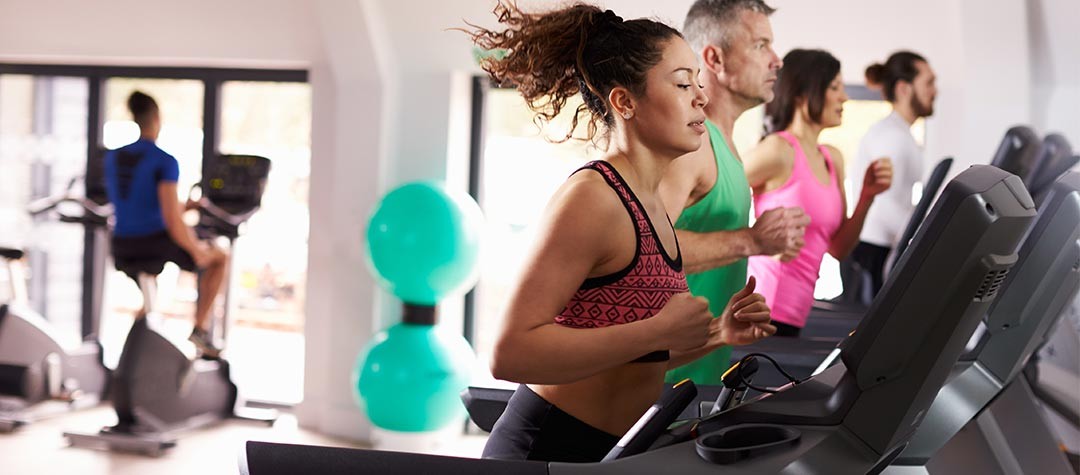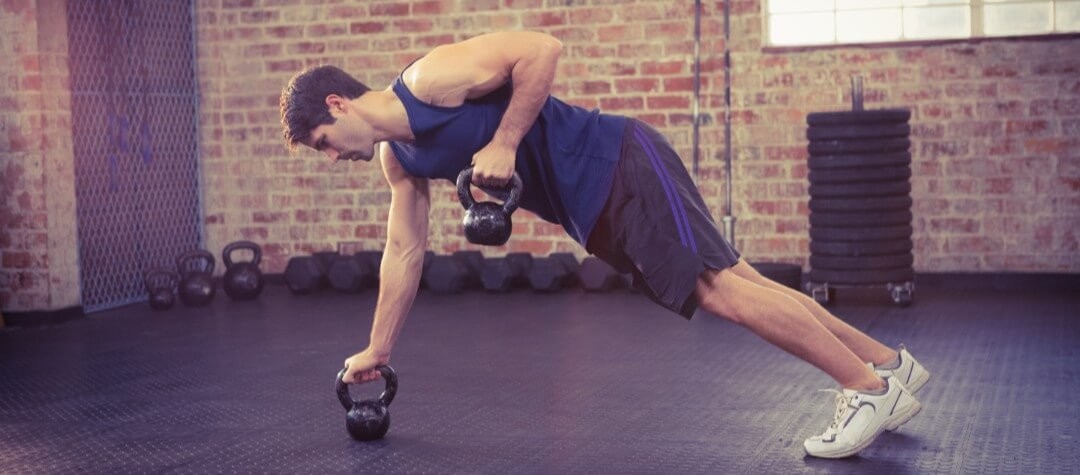There are several different methods of determining exercise intensity, one of which is training at different percentages of your maximum heart rate. Your maximum heart rate (MHR) is simply the highest heart rate that you can achieve during exercise. Specific treadmill protocols and very high intensity training tests are often used by elite athletes to determine their MHR.
However, a simple method to determine your approximate MHR is available with a quick and simple formula.
To calculate your approximate MHR, just try using the following formula:
Men: MHR = 214 – (0.8 x your age in years)
Women: MHR = 209 – (0.9 x your age in years)
For example:
A 30-year-old man will have an approximate MHR of: 214 – (0.8 x 30) = 190
A 30-year-old woman will have an approximate MHR of: 209 – (0.9 x 30) = 182
Once you have calculated your MHR, simply subtract your resting heart rate (RHR), (your RHR is your heart rate when you are fully relaxed, i.e. when you wake up in the morning) from your MHR to obtain your working heart rate (WHR). Then use the following training zones for your workouts:
Easy = 60 to 75 per cent of your WHR (+ your RHR)
Moderate = 75 to 85 per cent of your WHR (+ your RHR)
Hard = 85 to 95 per cent of your WHR (+ your RHR)
For example:
- A 30-year-old man with a RHR of 60, planning an easy workout will have a MHR of 190.
- His WHR = 190 – 60 = 130.
- His easy zone is 60-75% of 130 (+ 60) = 78 (+60) to 97.5 (+60) = 138 to 157.5.
Hence he should set his upper limit at 157 or 158 beats per minute and his lower limit at 138 beats per minute.
Pacing yourself during exercise using the Borg technique
An alternative to using training zones based on percentages of MHR is to adopt the Borg technique in order to pace your cardiovascular activity.
If you’ve ever experienced difficulty with sustaining your cardiovascular workouts , the problem is likely to be one of pace judgment and intensity, assuming of course that you’re not ill or suffering from an injury. This problem is very common and can stem from starting your walk, jog, run, cycle, row, etc too quickly and then paying the price later on, or you may find that occasionally you complete your sessions too conservatively and feel afterwards that you’ve ‘a lot more left in the tank’ and could have trained at a higher intensity. This is also a pacing issue.
The solution to both problems is learning how to evaluate your training intensity and match it to your session so that you get maximum training benefits — and importantly, enjoy your training sessions.
Start exercise as you mean to go on
Let’s assume that a friend is joining you for a jog or run. To begin your session it is very important that you start with a proper warm-up. Your warm-up should be at a slower pace than that of your main run and should gradually bridge the gap from being sedentary to being active. Your warm-up serves to prepare your body for your main session. You function more efficiently when you are warmed up, whereas if you just dash out of the front door at top speed, as well as risking injury, you will go into serious oxygen debt from ‘red-lining it’ too soon, resulting in the problems outlined earlier.
Borg training exercises
The Borg scale is a method of measuring how hard you’re training and refers to your rate of perceived exertion (RPE). Invented by a Swedish professor, it is a great tool for ensuring that you’re training at the correct pace for how you currently feel — not too slow and not fast. The scale ranges from six to 20, where six equates to no effort at all and 20 is absolutely flat out.
| Rating | Intensity of session |
|---|---|
| 6 | No effort |
| 7 | Very, very light |
| 8 | |
| 9 | Very light |
| 10 | |
| 11 | Fairly light |
| 12 | |
| 13 | Somewhat hard |
| 14 | |
| 15 | Hard |
| 16 | |
| 17 | Very hard |
| 18 | |
| 19 | Very, very hard |
| 20 | Absolute maximum |
Benefits of the Borg technique
The advantage of using RPE against any other method of pace judgment or training intensity is that it encompasses all factors, internal and external. For example:
- Varying fitness levels - Irrespective of your current fitness, the Borg scale provides you with a personal measure of how hard you feel you are exercising.
- Weather conditions for exercise - The weather is a big factor in how you feel when you train.
- Hot, humid weather and exercise - When it is hot and humid , you can feel like your session is very tough. Hot conditions will make you sweat more and dehydrate quicker, resulting in a decreased blood volume. This makes your heart (and of course you) work harder.
- Windy weather during exercise - A strong headwind will dramatically affect your pace. Despite your hardest efforts, you will not be able to maintain your fastest pace, so similar to hot conditions; the stopwatch is an ineffective guide, compared with RPE.
- Overall fatigue - You may be tired from work or other activities, which will make your session seem tougher. If you train solely to the stopwatch or heart rate monitor , there is a danger that you might overtrain.
- Sleep quota - Similarly to fatigue, lack of sleep will take the edge off your training performances which a heart rate monitor or stopwatch will not always reveal.
- Stress and exercise - Pressure and stress will cause tension to creep into your movements which will make your session harder. RPE is a great indicator of how hard or easy a particular session feels when less tangible factors such as stress are difficult to quantify.
- Effects of other training - The cumulative effects of repeated training sessions can cause fatigue or staleness. RPE will provide you with instant, personal feedback on how your session is progressing.
- The phrase ‘listen to your body’ has more than a ring of truth to it. Just like RPE, it means train as you feel. If you feel below par, be prepared to back off a little and if you feel good, then you can look to extend your pace. The key point is to not be a slave to the training schedule.
Training tips for using the Borg scale
- Continually evaluate your level of exertion by asking yourself how hard or easy the pace feels.
- If you’ve planned a hard workout and you grade your RPE at nine, you’ve room to step up the intensity — and of course, vice versa.
- Evaluate your effort throughout your session to maximize your performance.
- Be honest with yourself. The Borg scale will work best if you evaluate your workload fairly and honestly.
- Never be afraid to back off if necessary because reduced training is always better than overtraining.
- If you’re training with friends, ask each other how the session feels for them from six to 20 so that you can all train together.
So, the next time your sport watch or heart rate monitor gives you information that doesn’t seem to match with how you’re feeling, assess yourself on the Borg scale and modify the intensity of your workout accordingly. Then any risk of overtraining or excessive fatigue is reduced and most importantly, you’ll enjoy your workout more.














